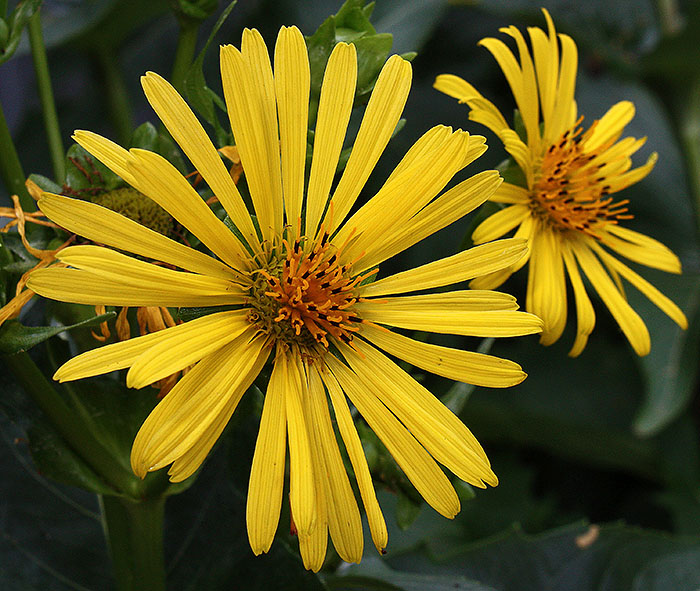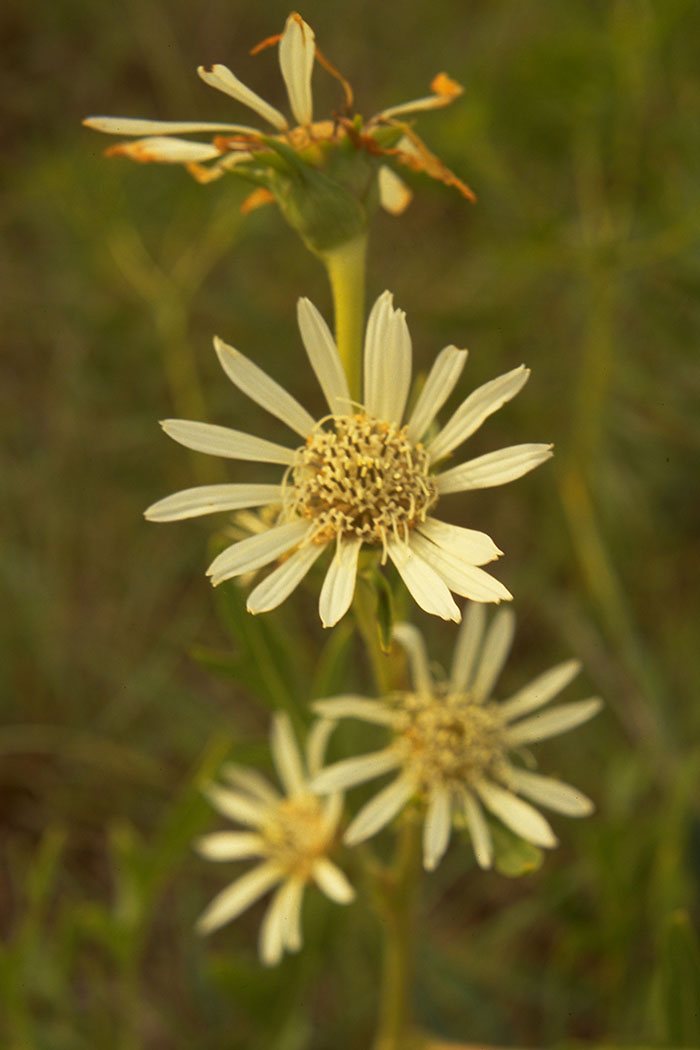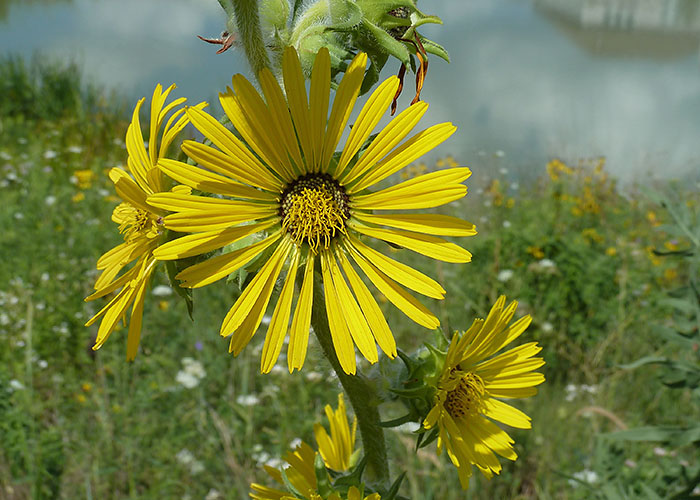Flower Power

The author has grown cup plant (Silphium perfoliatum) in her Illinois yard. PHOTO R.W. Smith
BEMOANING THE LOSS OF THE NORTH AMERICAN PRAIRIE, author Aldo Leopold wrote, “What a thousand acres of silphiums looked like when they tickled the bellies of the buffalo is a question never again to be answered…”
Silphiums were among the many new plants the European settlers encountered when they came to North America. Among the 8-foot-tall grasses, they discovered equally as tall plants with stems and leaves as rough as sandpaper that yielded copious yellow blooms – the silphiums.
As prairies became degraded, grazed and built upon, the populations of silphiums as well as other grassland plants declined. But silphiums are staging a comeback – not only in restored prairies but also in home gardens.
Gardeners favor silphiums because they are native, fairly easy to grow and filled with blooms sometimes for a month or more beginning in late spring through early autumn, depending on location.
“Silphiums are good, solid, long-lived perennials,” says Andrea DeLong-Amaya, director of horticulture at the Wildflower Center. “They are a sign of a healthy prairie.” They also benefit wildlife, including native bees, butterflies, other insects and birds.
As with sunflowers, the central disk in silphiums surrounded by the many yellow “petals” consists of multiple tiny flowers.

White rosinweed (Silphium albiflorum) is a good choice for gardeners who want to use less water. PHOTO Peter Loos
Fifteen native species of silphiums grow in North America, from Ontario south to Texas and Florida and from the East Coast west to New Mexico. A few species are rare and confined to small regions, such as white compass plant (Silphium albiflorum), which is native only to Texas and the only member of the genus with white flowers.
Silphium’s common names can get confusing. For example, S. terebinthinaceum has been called prairie dock as well as prairie rosinweed. Other silphiums are sometimes simply called rosinweeds because of the resinous sap on stems when they’re in bloom. Pioneers chewed the resin like gum.
Some silphium species including prairie dock and compass plant (S. laciniatum) have deep tap roots, where moisture and nutrients are stored, helping the plant withstand drought, says DeLong-Amaya.
Compass plant is one of the most widespread silphiums, and its name refers to the north-south orientation of the leaves, according to Ken Robertson, plant systematist emeritus for the Illinois Natural History Survey. Its deeply incised leaves make the plant look almost fern-like. Compass plants can live to 100 years, he says. Other silphiums also have unique leaves. Prairie dock has large elephant ear-shaped basal leaves, and cup plant (S. perfoliatum) has leaves that join at the stem, creating a natural cup where water gathers, attracting birds to drink.
Local native garden centers or online catalogs often sell seeds and potted plants of silphiums. Gardeners also collect seed from local prairies or other gardens, if given permission Most silphium seeds need cold, moist storage for several weeks, or they can be planted in soil where it’s cold in winter, with hopes the birds don’t eat them all.
It can take several years for some silphiums, including compass plant and prairie dock, to flower. Cup plant (S. perfoliatum) and others flower sooner and self-seed more readily.
“If you collect wild seed and grow silphium in your garden, some of them may get tall and leggy and fall over,” Robertson said. “I have to stake my compass plant up in the fall.” He doesn’t cut back his silphiums after they stop blooming, because the big stems attract native insects to overwinter, he says. “And my wife loves watching the goldfinches eat the seeds.”

Compass plant (Silphium laciniatum) is a tall, coarse sunflower-like perennial. The author has been test-growing the plants – like this one – in small backyard plots. PHOTO Sheryl DeVore
Growing Silphiums at Home
For the past decade, at our Illinois home my husband and I have been growing four silphium species in two small backyard prairie plots, roughly 10 x 15 feet and 4 x 8 feet. We’ve learned a few lessons along the way. For example, don’t try to dig up a prairie dock (S. terebinthinaceum) for transplanting – its tap roots are so deep, you may never get it out of the soil. We finally did but were exhausted, and then we had to dig a hole deep enough to plant it and cover it with soil and then water it profusely. It did eventually bloom.
We later discovered the Grand Prairie Friends, who grow and sell native plants. We purchased and transplanted several prairie dock and compass plants (S. laciniatum), and they bloomed within a year or two. We’ve learned that these species need lots of sun, so we’re considering trimming some trees to reduce the shade. In addition, a native goldenrod is crowding out the compass plant, so we thin out the intruders annually.
We also grow cup plant (S. perfoliatum), which likes our yard – perhaps too much; it’s spreading and doesn’t seem to care about partial shade. Its roots, like those of rosinweed (S. integrifolium), which we also grow, are shallower than those of compass plant and prairie dock.
Silphiums bring copious blooms beginning in mid-summer and lasting even past the first frost, casting a golden glow in our northern Illinois yard and complementing the purple hues of ironweed and New England aster.
Written by Sheryl DeVore

